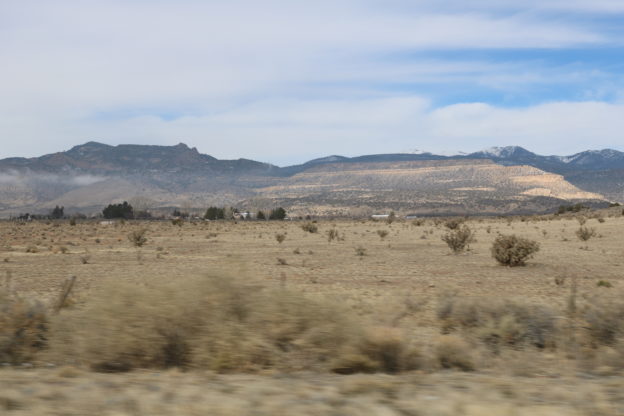
Lenten Reflections from a Frustrated Millennial Catholic
Lindsay Hueston
April 4, 2019
I’ve been angry at the Catholic Church for a while.
I couldn’t tell you the last time I went to Mass and left completely and utterly fulfilled — especially in light of the church’s many, many structural failures which have surfaced over the past few decades. I work at a Catholic organization, and still technically consider myself Catholic. I desire a church that works for justice, but am not seeing it. How can these things coexist?
As a result, I’ve stepped back from the church for several months, needing some space and time away. In removing myself from the institution, I have found myself to be walking through a sort of spiritual desert. The institutional Catholic Church as we know it is based on strict hierarchy; my anger stems from the fact that we, as church, cannot seem to step out of that structure in order to move forward. Why are we too often a church that continues perpetuating injustice, instead of overturning oppression?
I see a parallel between my reluctant Catholicism and the way that many in our country disagree with President Trump, but still call themselves American. As angry as I am, I can’t quite sever my ties to Catholicism. I’ve discovered that there is something valuable, even holy, in righteous anger. It spurs change, and enables people to work for justice. It is taxing, though, being angry at a patriarchal system that is terribly slow to change. In the same way, outrage and disagreement with President Trump and his policies are spurring new political engagement in our country.
The church I desire is one of justice and inclusion. The church I wish for is one that promotes anti-racism, supports the LGBTQ community, and removes all oppressions, even as human error often gets in the way. But this does not seem to be how the present Catholic Church works, and it angers me. When thinking about the distance between the church as it is and the church I desire, and my place in the church, the Jesus who flipped over tables in outrage comes to mind. It’s a comforting image: at some point, he was frustrated with his church, too.
I find it ironic that I am having these realizations at the same time as Lent, an intentional time of spiritual reflection and renewal. As the foundation of Lent, Jesus took time alone, went out to the desert, and reflected in a space of relative isolation. That idea resonates with me, and feels familiar — spending time away in order to come back restored. In this Lenten season of reflection and prayer, I am drawn towards reexamining my faith — present on the fringes of the church as it may be.
What I’ve learned about the desert recently is that it isn’t a barren wasteland, as many portray it to be. Our staff visited the desert in New Mexico in February, and found it full of life. In a space of seeming desolation, things are flourishing. In the desert there is beauty, still: life adapting to circumstances it has been given.
That image is applicable to how I’ve been experiencing my faith lately: seemingly dead and empty, but quietly, blooms a cactus. There is life amidst the apparent emptiness; it’s just different than what we think it may look like.
I’ve realized that my anger is well-founded, and this has allowed me to channel my spirituality into practices that make me feel most whole: journaling, the Examen, building community with those experiencing homelessness. My faith has often felt like the desert: seemingly empty and scorched. But Jesus went to the desert, too. And the desert continues on, with life teeming in small, but important ways.







